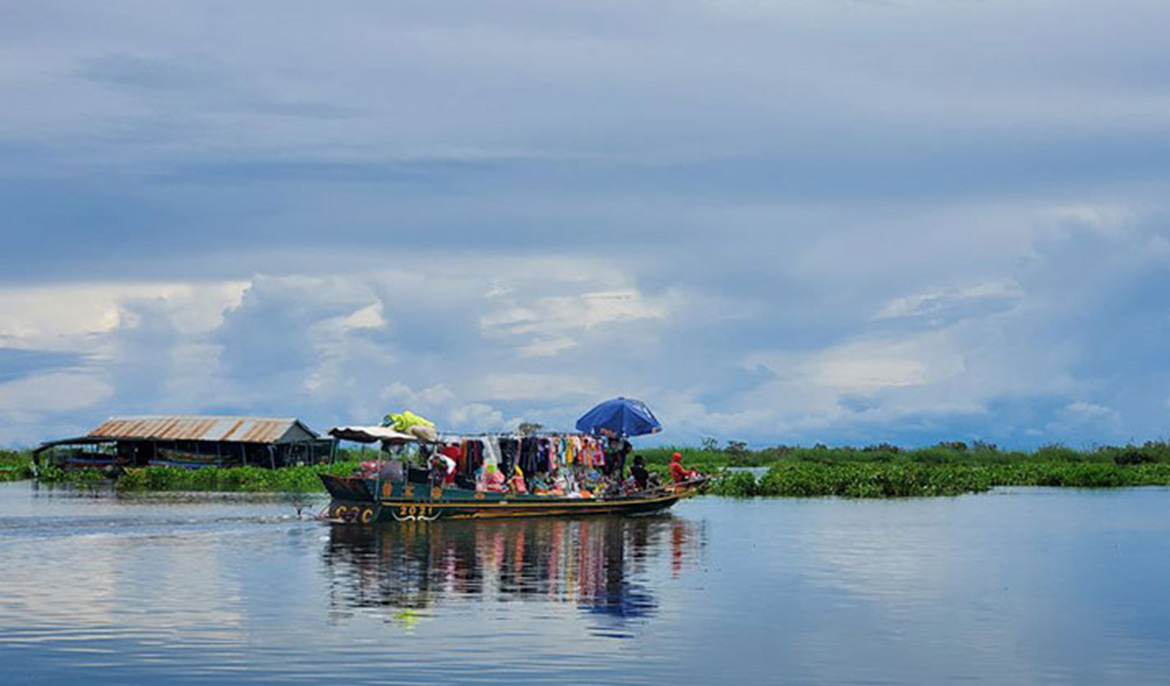The uniqueness of the Tonle Sap River with its charming floating villages lies in its annual flow reversal, flowing one way for half the year and in the reverse direction for the other half. Travel operators see tremendous potential in promoting the river as a tourist attraction in Cambodia.
Tourists often like to see different communities, and the lake and river communities of the Tonle Sap are unique, said Douglas Woodring, founder and Managing Director of Ocean Recov to Khmer Times. This is mainly because they need to be flexible and change some of their ways of life each season depending on whether the waters are high or low on the lake and its canals and tributaries.
Each season offers different potential tourist experiences and touchpoints.
“Firstly we need to define clearly what is Tonle Sap because Tonle Sap is two different things,” said Alexis de Suremain, Maads brand Founder. Tonle Sap is a river that flows from Phnom Penh to Tonle Sap Lake and this river is very unique because the flow reverses. The other uniqueness of the Tonle Sap River is that the level changes roughly by a ten-metre difference in the water level depending on the season.
There is much more potential to develop sustainably, said Daniel de Gruiter, Managing Director, Lolei Travel Asia. With a nice resort or a proper homestay for example, people can also cycle along the river from Phnom Penh to Kampong Chhnang in two or three days’ time, adding another really off the beaten trail to Cambodia’s already appealing cycling routes.
On Tonle Sap River, apart from tourist boats cruising around Phnom Penh, nothing is happening, said Freneau Jean Pierre, the Two Rivers Company. However the potential should grow inevitably because people request for nature experiences and Tonle Sap (both the river and lake) has a lot of experiences to offer.
River and aquatic tourism has great potential due to the distance, complexity and diversity of its waterways and coastlines, continued Woodring. Many of them are home to unique and/or endangered species of plants and wildlife.
There is no hurdle to promote Tonle Sap for tourism purposes, said Pierre. It’s only a question of will. Firstly, the riverbanks should be organised and highlighted.
Some of the hurdles would include infrastructure, both to access certain communities or environmentally important and interesting areas of the lake, either by boat or by road, said Woodring.
There may also be issues where communities do not want to be bothered by outside tourists, so this needs to be taken into account so that their lives are not changed or impacted in negative ways.
Mostly pollution is the hurdle, said de Gruiter. The river and the lake are polluted, the floating villages are in bad shape and have bad reputation due to the many scams that happened in the past.
There are limited regulations and quality facilities to create a product along the river or on the lake that would keep people for longer than half a day on the lake.
Relatively untapped, Tonle Sap River as well as the Lake with its floating communities and abundant wildlife offer unlimited potential for tourism. With innovative ideas and strategic implementation, Cambodia stands to reap huge benefits from tourism on Tonle Sap. khmertimeskh



